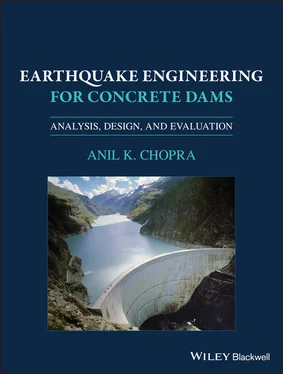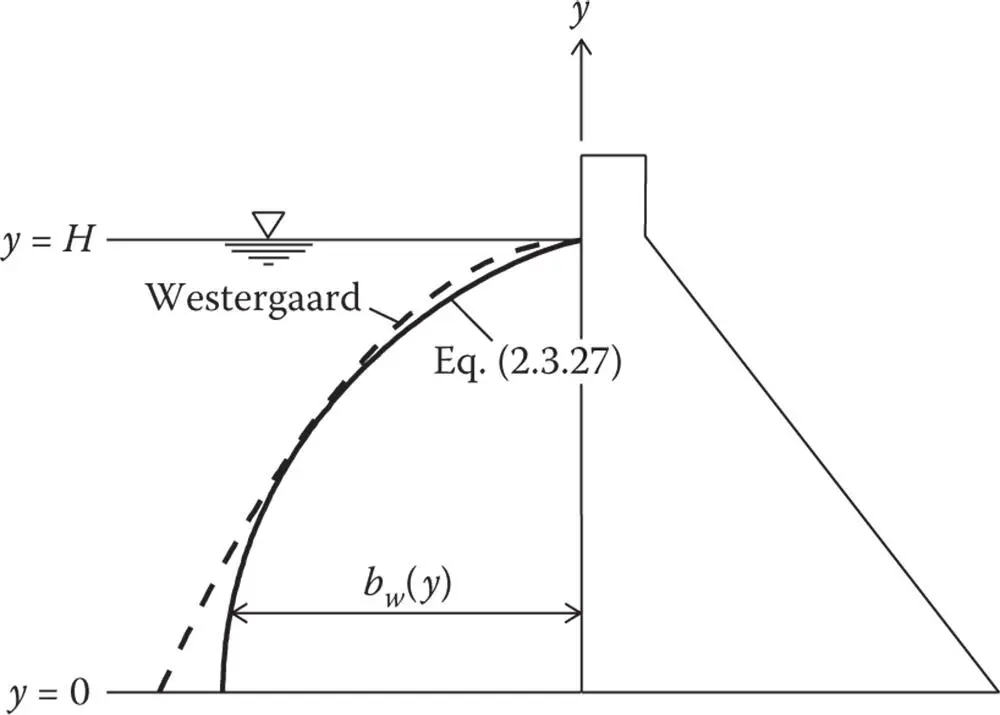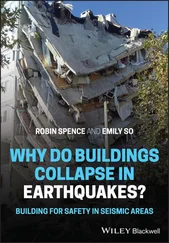Anil K. Chopra - Earthquake Engineering for Concrete Dams
Здесь есть возможность читать онлайн «Anil K. Chopra - Earthquake Engineering for Concrete Dams» — ознакомительный отрывок электронной книги совершенно бесплатно, а после прочтения отрывка купить полную версию. В некоторых случаях можно слушать аудио, скачать через торрент в формате fb2 и присутствует краткое содержание. Жанр: unrecognised, на английском языке. Описание произведения, (предисловие) а так же отзывы посетителей доступны на портале библиотеки ЛибКат.
- Название:Earthquake Engineering for Concrete Dams
- Автор:
- Жанр:
- Год:неизвестен
- ISBN:нет данных
- Рейтинг книги:4 / 5. Голосов: 1
-
Избранное:Добавить в избранное
- Отзывы:
-
Ваша оценка:
Earthquake Engineering for Concrete Dams: краткое содержание, описание и аннотация
Предлагаем к чтению аннотацию, описание, краткое содержание или предисловие (зависит от того, что написал сам автор книги «Earthquake Engineering for Concrete Dams»). Если вы не нашли необходимую информацию о книге — напишите в комментариях, мы постараемся отыскать её.
offers a comprehensive, integrated view of this progress over the last fifty years. The book offers an understanding of the limitations of the various methods of dynamic analysis used in practice and develops modern methods that overcome these limitations.
This important book:
Develops procedures for dynamic analysis of two-dimensional and three-dimensional models of concrete dams Identifies system parameters that influence their response Demonstrates the effects of dam–water–foundation interaction on earthquake response Identifies factors that must be included in earthquake analysis of concrete dams Examines design earthquakes as defined by various regulatory bodies and organizations Presents modern methods for establishing design spectra and selecting ground motions Illustrates application of dynamic analysis procedures to the design of new dams and safety evaluation of existing dams. Written for graduate students, researchers, and professional engineers,
offers a comprehensive view of the current procedures and methods for seismic analysis, design, and safety evaluation of concrete dams.


 . Equations (2.3.23)and (2.3.22)are identical if n 1= 1, i.e.
. Equations (2.3.23)and (2.3.22)are identical if n 1= 1, i.e.  , because then the term involving sin ωt in Eq. (2.3.23)vanishes. Thus, Westergaard's solution is valid only if the excitation frequency ω is less than the fundamental frequency
, because then the term involving sin ωt in Eq. (2.3.23)vanishes. Thus, Westergaard's solution is valid only if the excitation frequency ω is less than the fundamental frequency  of the fluid domain (Chopra 1967).
of the fluid domain (Chopra 1967).
 , the added mass is
, the added mass is
 , the added mass analogy is also restricted to the same range of frequencies. Note that the added mass of Eq. (2.3.25)depends on the excitation frequency and is relevant only for horizontal ground motion in the stream direction.
, the added mass analogy is also restricted to the same range of frequencies. Note that the added mass of Eq. (2.3.25)depends on the excitation frequency and is relevant only for horizontal ground motion in the stream direction.







 , can be expressed in terms of complex‐valued frequency response functions. Thus the modal coordinate and hydrodynamic pressure are given by
, can be expressed in terms of complex‐valued frequency response functions. Thus the modal coordinate and hydrodynamic pressure are given by




 is governed by Eq. (2.3.8)subject to the boundary conditions of Eqs. transformed according to Eqs. (2.4.4)and (2.4.5):
is governed by Eq. (2.3.8)subject to the boundary conditions of Eqs. transformed according to Eqs. (2.4.4)and (2.4.5):










